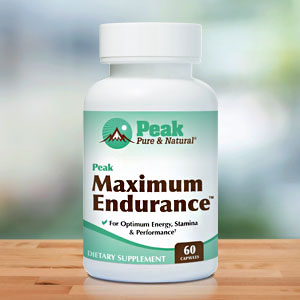Get Easy Health Digest™ in your inbox and don’t miss a thing when you subscribe today. Plus, get the free bonus report, Mother Nature’s Tips, Tricks and Remedies for Cholesterol, Blood Pressure & Blood Sugar as my way of saying welcome to the community!
Dopamine: The link between exercise and cognitive health

For years, if not decades, we’ve known that if you want to stay brain fit, you have to stay full-body fit. In fact, study after study has linked aerobic fitness to improved cognitive function.
Yet, despite knowing it to be a fact that body fitness equals brain fitness, scientists have been unable to find the link to why adding in aerobic exercise makes such a difference to your brain…
Until now.
Now, thanks to a new study from the University of Tsukuba, we’ve found the blink link between aerobic fitness and brain function.
What’s your spontaneous blink rate?
The study, published in Medicine & Science in Sports & Exercise, found that your spontaneous eye blink rate (also known as sEBR), can reveal both your aerobic fitness and the health of your brain function.
Here’s why…
Your blink rate reflects the activity of the dopamine system in your body.
This dopaminergic system is associated with both executive functioning and motivated behavior, including for physical activity — think whether or not you can push yourself through your workout or even enough to get into your workout clothes!
And the researchers discovered that they could actually monitor the dopaminergic system and how well someone could perform on a cognitive task by checking sEBR.
“Although previous studies have indicated that aerobic fitness and cognitive function are correlated, this is the first to provide a neuromodulatory basis for this connection in humans. Our data indicate that dopamine has an essential role in linking aerobic fitness and cognition,” says first author of the study Ryuta Kuwamizu.
Their study showed that a higher sEBR equals greater executive function, and thus higher neural efficiency — all of which also required higher aerobic fitness.
Are you getting the drift?
If you want to keep your brain function, you need exercise
I know right now you’re probably trying to gauge your blink rate. But the takeaway here was that dopamine plays a part between exercise and your cognitive health.
The research team points out that physical inactivity may be related to dopaminergic dysfunction and that improving dopaminergic function through exercise can particularly boost motivation, mood, and mental function.
When you exercise endorphins are released, as well as brain neurotransmitters including dopamine, norepinephrine and serotonin. Dopamine is known as the “feel-good hormone” and “reward” neurotransmitter, but science has known for a while that it is involved in neurological and psychological functions as well. For example, in cases of Parkinson’s disease, low dopamine levels are seen.
So, it’s obviously important to brain health. The other is that it helps reinforce motivation. If you can get yourself to exercise, dopamine will be produced and help you learn to reward yourself by sticking to it.
Moderate-intensity aerobic exercise has proven to be the best when it comes to maintaining cognitive abilities.
And the easiest way to determine if you’re exercise falls into that moderate level is the “Talk Test.” If you can talk, but not sing, while you’re exercising, you’ve probably hit your target heart rate.
You can also use an Apple Watch, FitBit or other monitor that reads your heart rate. To calculate your target rate, simply subtract your age from 220.
So if you’re 50, your target heart rate for moderate-intensity exercise is 220 – 50, or 170 beats per minute (bpm).
Great options for aerobic activity include:
- Light jogging
- Brisk walking
- Swimming
- Bicycle riding
- Gardening
- Housework like vacuuming or mopping
It doesn’t matter which activity you choose, as long as you do it!
Editor’s note: There are perfectly safe and natural ways to decrease your risk of blood clots including the 25-cent vitamin, the nutrient that acts as a natural blood thinner and the powerful herb that helps clear plaque. To discover these and other secrets of long-lived hearts, click here for Hushed Up Natural Heart Cures and Common Misconceptions of Popular Heart Treatments!
Sources:
Blink! The link between aerobic fitness and cognition – EurekAlert!
Target Heart Rate and Estimated Maximum Heart Rate – CDC
Moderate Intensity Exercise Can Boost Memory Performance: Study – NDTV Education













